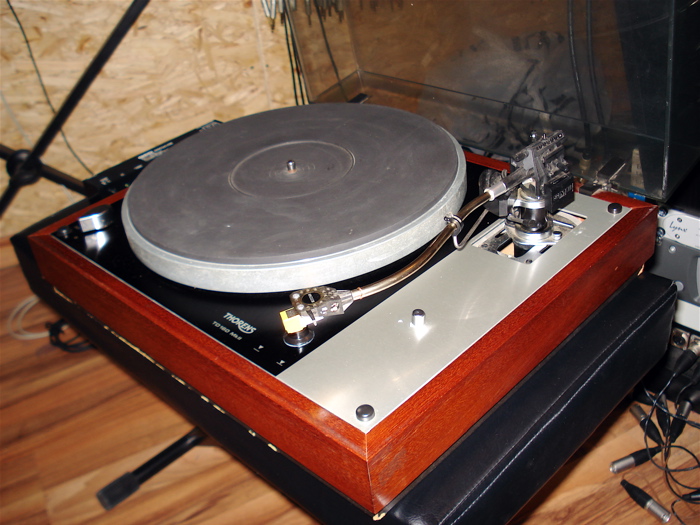Although I'm sure the National circuit is satisfactory, the input noise current density of the part will be a significant contribution to overall noise at the typical spec of 1.6pA/sq root Hz, in the frequency range where a moving-iron cartridge's inductance is the dominant component of impedance.
The RIAA compensation they show is accurate for ideal opamps to a peak-to-peak error of about 0.14dB between 20Hz and 20kHz. This of course presumes that your component values are precise. I am a bit peeved when I see circuits paralleling three caps to get a supposed value of their sum, without saying how precise the larger of the parts need(s) to be. The best policy is to get some and measure with a good capacitance meter.
The same holds true for series and parallel combinations of resistors, but here at least you can buy 0.1% ones to begin with.
The accumulation of input offset voltage at these d.c. gains will be appreciable but perhaps tolerable. In the rare case of where the rest of the chain is d.c. coupled you will want to have some d.c. block or correction somewhere before hitting the loudspeakers or headphones. Worst-case d.c. offset due to voltage offset would be about 375mV. Since the part has input bias current cancellation to a nominal 10nA and max 72nA, this will be a different contribution but not too serious for typical moving-iron cartridges (R internal usually around 1kohm). However with the cartridge disconnected the output of the preamp could be as much as 1.8V due to this term and the 47k input R, with the d.c. gain of 535 (+54.6dB).
Overload capability is good even with the passive central EQ section. The limitation is in the first stage output swing, which for a 20dB nominal overload at 20kHz, i.e. 500mV rms, is already 11.6V rms. But note that the gain is actually quite low---at 1kHz one typically sees preamps around 40dB or more, and this one is about 34.7dB for that reference frequency.
The impedance of the first stage feedback network could be reduced a bit for slightly lower voltage noise---the 150 ohm R raises the nominal 1kHz noise density due to the opamp alone from 2.5nV/sq rt Hz to almost 3nV. Of course that is still pretty low. Also you don't want to tax the output current capability of the first stage too much.
And also as JR suggests, a little buildout R in series with the output is advised to ensure stability driving cables.
A full analysis of noise performance of preamps for moving iron cartridges is complicated, but there's a National app note with a very good discussion and example. I don't have the ref at hand at the moment but it's been in a thread or two here.




